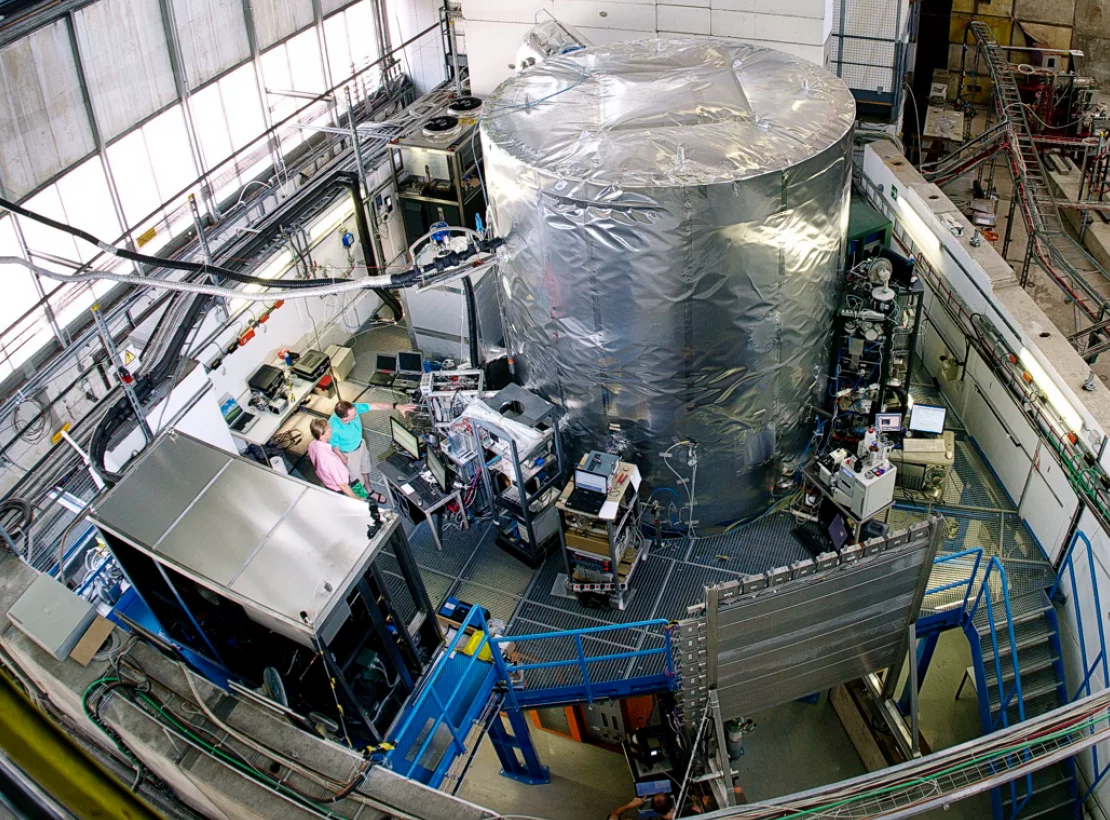Duration: 2017-2021
Contact: Imad El Haddad, imad.el-haddad@psi.ch
Background of project
CLOUD (cosmics leaving outdoor droplets) is an experiment that uses a 3-m stainless-steel chamber at CERN to study the possible link between galactic cosmic rays and cloud formation. Current experiments are designed to better understand aerosol nucleation processes in different environments (i.e. the formation of new particles from condensing vapors) to provide reliable aerosol physics for climate models as well as ice nucleation and ice nucleating particles (pre-existing aerosols which aid heterogeneous ice nucleation) which can significantly affect cloud radiative and microphysical properties. These data will help to quantify the direct and indirect radiative effects of aerosols on climate, which are recognized as the largest source of uncertainty in climate forcing contributed by mankind.
The CLOUD-MOTION project is funded by the EU (Marie Curie Initial Training Network MSCA-ITN project no. 764991) and involves an interdisciplinary team of scientists from 16 institutes in 7 countries, comprised of atmospheric physicists, solar physicists, and cosmic-ray and particle physicists.
Our contribution to the project are the development and employment of instruments for the measurement of
- particle size distributions (nano-SMPS, SMPS, CPC 2.5)
- gas concentrations (such as NOx, ammonia, and CO)
- state of the art particle and gas phase mass spectrometers (EESI-TOF, AMS)
Key findings
In a recent paper published in Nature, the CLOUD collaboration presents measurements of extremely rapid growth rates caused by condensation of nitric acid and ammonia as well as new particle formation from these vapours at low temperatures It is expected that these rapid growth rates increase survival probability of particles in polluted areas, and nucleation may provide an important source of new particles in the cold upper free troposphere.
Media
Publications
-
Kirkby J, Curtius J, Almeida J, Dunne E, Duplissy J, Ehrhart S, et al.
Role of sulphuric acid, ammonia and galactic cosmic rays in atmospheric aerosol nucleation
Nature. 2011; 476(7361): 429-435. https://doi.org/10.1038/nature10343
DORA PSI -
Almeida J, Schobesberger S, Kürten A, Ortega IK, Kupiainen-Määttä O, Praplan AP, et al.
Molecular understanding of sulphuric acid-amine particle nucleation in the atmosphere
Nature. 2013; 502(7471): 359-363. https://doi.org/10.1038/nature12663
DORA PSI -
Riccobono F, Schobesberger S, Scott CE, Dommen J, Ortega IK, Rondo L, et al.
Oxidation products of biogenic emissions contribute to nucleation of atmospheric particles
Science. 2014; 344(6185): 717-721. https://doi.org/10.1126/science.1243527
DORA PSI -
Dunne EM, Gordon H, Kürten A, Almeida J, Duplissy J, Williamson C, et al.
Global atmospheric particle formation from CERN CLOUD measurements
Science. 2016; 354(6316): 1119-1124. https://doi.org/10.1126/science.aaf2649
DORA PSI -
Kirkby J, Duplissy J, Sengupta K, Frege C, Gordon H, Williamson C, et al.
Ion-induced nucleation of pure biogenic particles
Nature. 2016; 533(7604): 521-526. https://doi.org/10.1038/nature17953
DORA PSI -
Tröstl J, Chuang WK, Gordon H, Heinritzi M, Yan C, Molteni U, et al.
The role of low-volatility organic compounds in initial particle growth in the atmosphere
Nature. 2016; 533(7604): 527-531. https://doi.org/10.1038/nature18271
DORA PSI -
Wang M, Kong W, Marten R, He X-C, Chen D, Pfeifer J, et al.
Rapid growth of new atmospheric particles by nitric acid and ammonia condensation
Nature. 2020; 581(7807): 184-189. https://doi.org/10.1038/s41586-020-2270-4
DORA PSI


